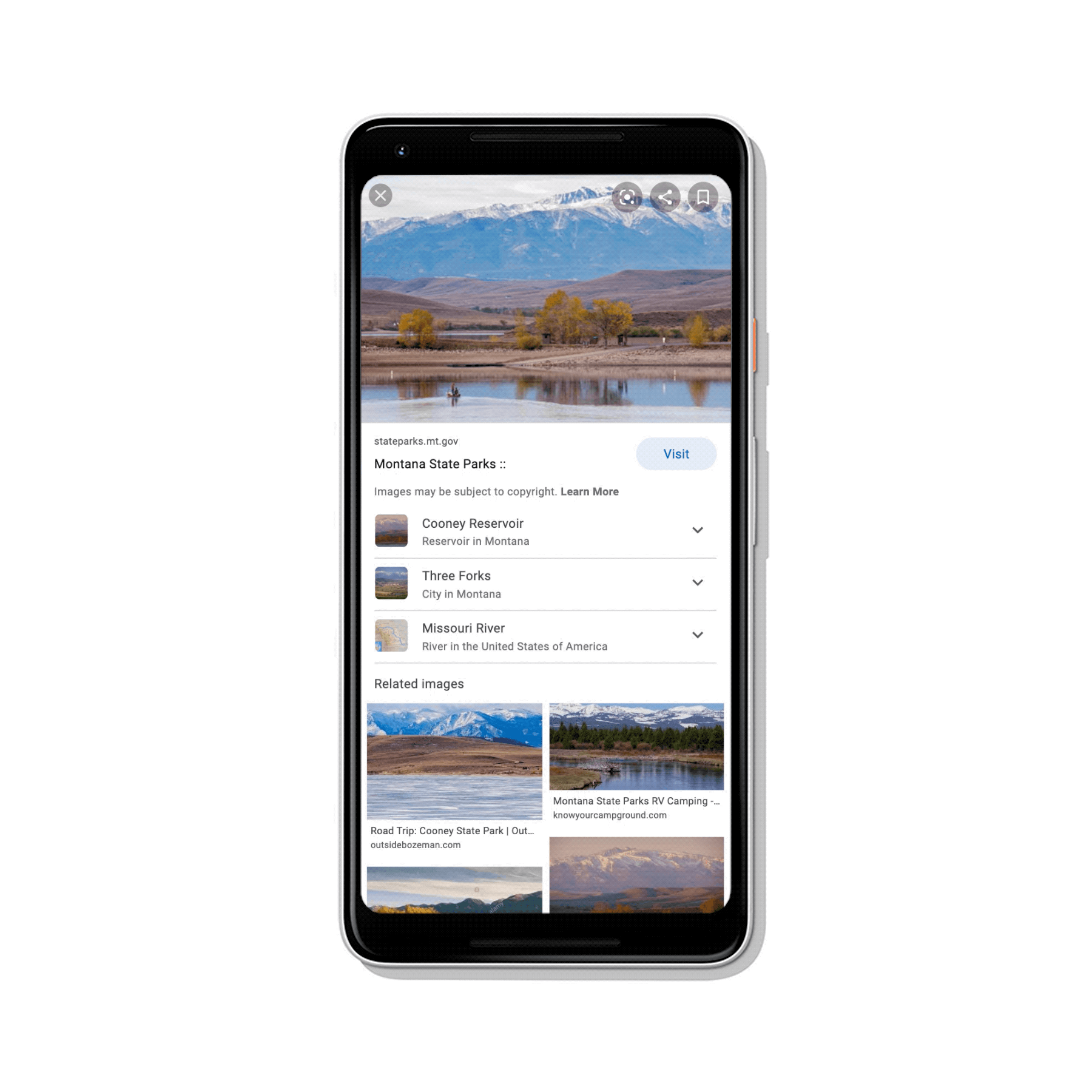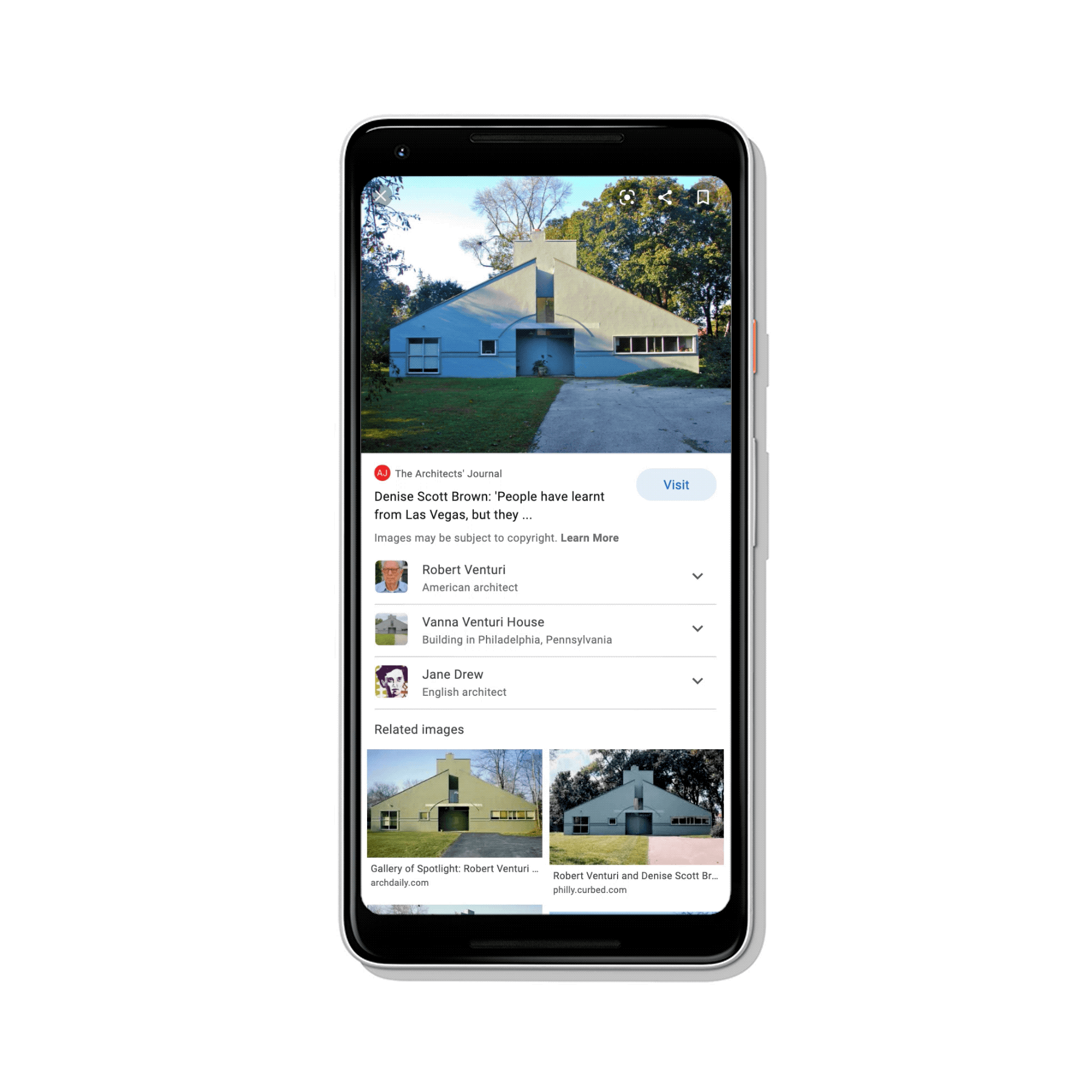Google Images, more info from the Knowledge Graph
We often repeat that images are an important source of organic traffic, and in recent years the Mountain View team is devoting even more care and attention to Google Images, increasingly a parallel search engine and full of features. The latest, just launched in the United States, allows users to get more information about what they are seeing, thanks to an integration with the Knowledge Graph.
The progress of Google Images
“In recent years we’ve made Google Images more useful by helping you explore beyond the image itself,” writes Angela Wu, Software Engineer at Search, in the post on The Keyword blog in which she announces the new feature.
For example, she reminds us, “we have added captions on miniature images in search results, you can use Lens to search within the images you find and can explore similar ideas with the Related Images feature”.
According to Wu, “all these improvements have the common goal of making it easier to find visual inspiration, learn new things and do more“.
More info on images with the Knowledge Graph
Since last week, the new feature has then debuted in the United States allowing us to quickly find information about what we see among the pictures of Google Images, displayed under the image we clicked on.
Basically, explains the Software Engineer, “when looking for an image from a smartphone you might see the data from the Knowledge Graph related to the result: the information may include entities such as people, places or things related to the image, coming from the database of the Knowledge Graph with its billion facts, and will help you to explore more and better the topic”.
This feature “will begin to appear on some images of people, places and things in Google Images and will expand to multiple images, languages and surfaces over time”, allowing users to learn “something new about images from around the Web”.
How works the latest feature of Google Images
The article also details the operation of this new tool, which will help to quickly and effectively understand if the image we are viewing and the related web page are relevant and pertinent to our research and our intent.
“Suppose you are looking for beautiful state parks to visit nearby,” says Angela Wu: “you want to take a bath during your exploration, then click on the picture of a park with a river. Below the picture you may see related topics, such as the name of the river or the city where the park is located. If you touch a specific topic, it will expand and show you a short description of the person, place or thing it refers to, along with a link for more information and other related topics to explore”.
It is easier to see the operation in this gif than to describe it!
Or, “if you are looking for information about the work of a famous architect to take inspiration for a home renovation or an art project: you might stumble upon this article about an architect who won an award and be able to easily learn more about the woman to whom that award is entitled”.
Connections between images and Knowledge Graph
From a technical point of view, to generate these links to the relevant entities of the Knowledge Graph Google takes “what we understand about the image through the deep learning, which evaluates the visual and textual signals of an image, and we combine it with our text comprehension system on the image’s web page”.
These information helps determine what are the most likely entities – people, places, or things – relevant to a specific image; the system then pairs all this with the existing topics in the Knowledge Graph, making them emerge in Google Images when “we’re sure we found a match“.
A new source of organic traffic for the SEO?
This feature could bring interesting benefits to the traffic of a site: the addition of context, in fact, could make the images more attractive and also increase the chances of clicking to the site. “It’s almost as if Google added a meta description to the image search results,” summarizes Matt Southern in Search Engine Journal, although the images and facts that appear below come from different sources.
In the examples shown by Google, in particular, it is noted that the image comes from a website while the additional information are taken from another source, that is to say, those reliable for Google (as we said in the article on the Knowledge Panel).
This means, then, that at the moment there seems to be limited control for site owners over the information displayed under their images in search results, but also that Google is providing users with more information about images that could potentially generate more clicks on the source of the image.






